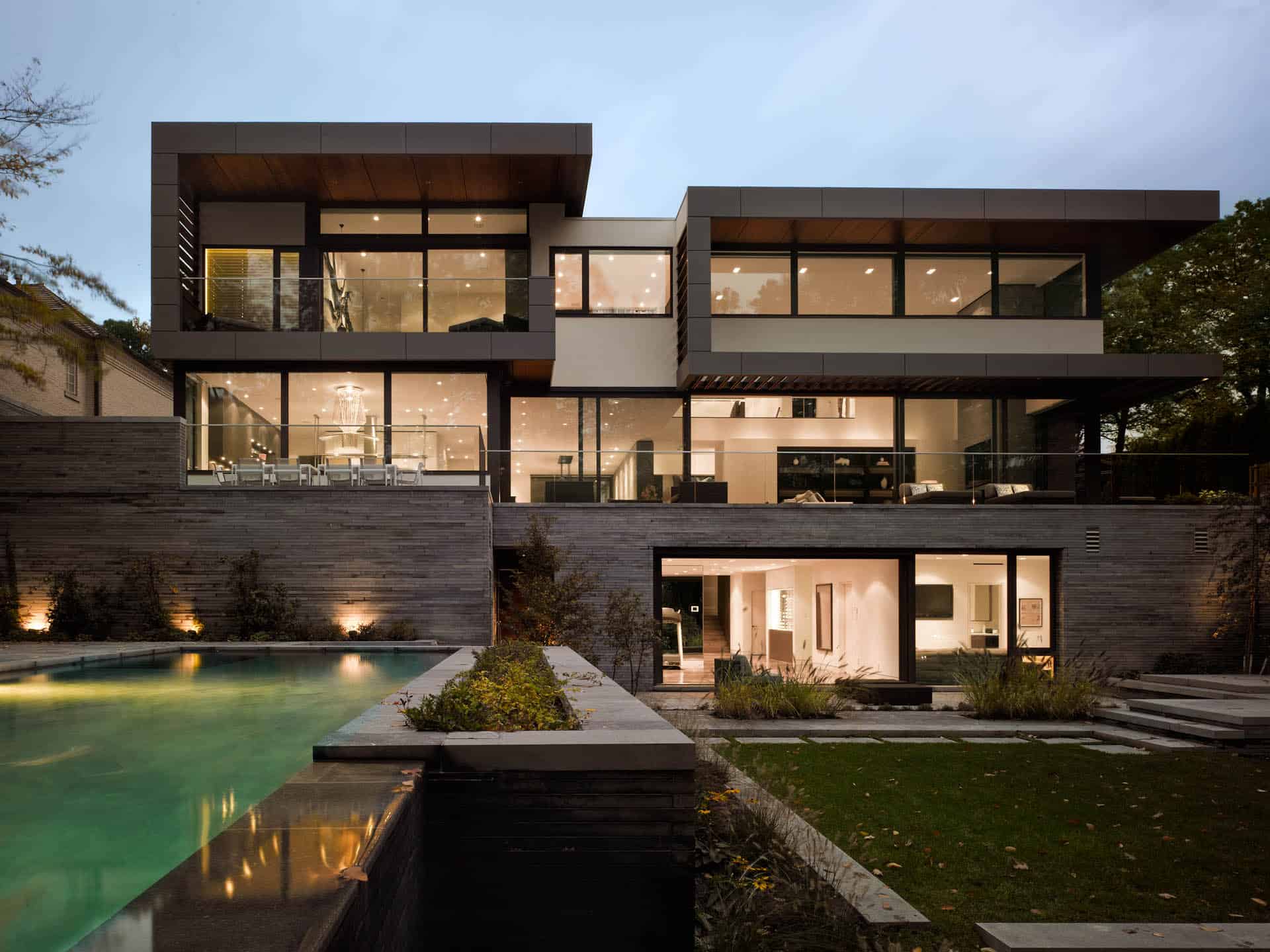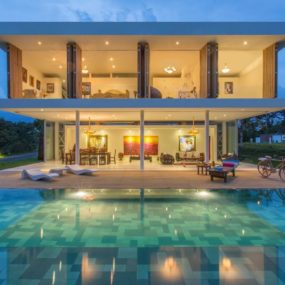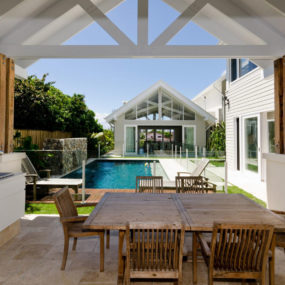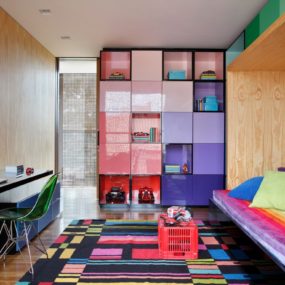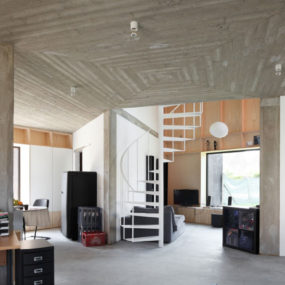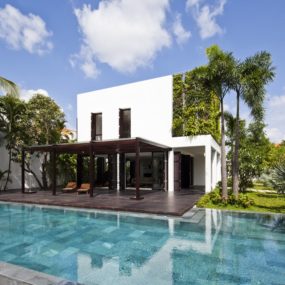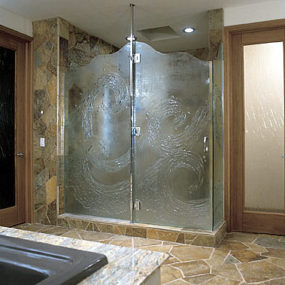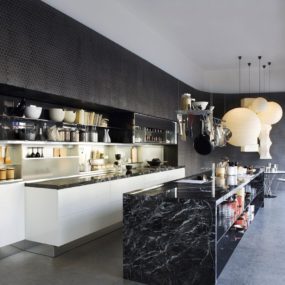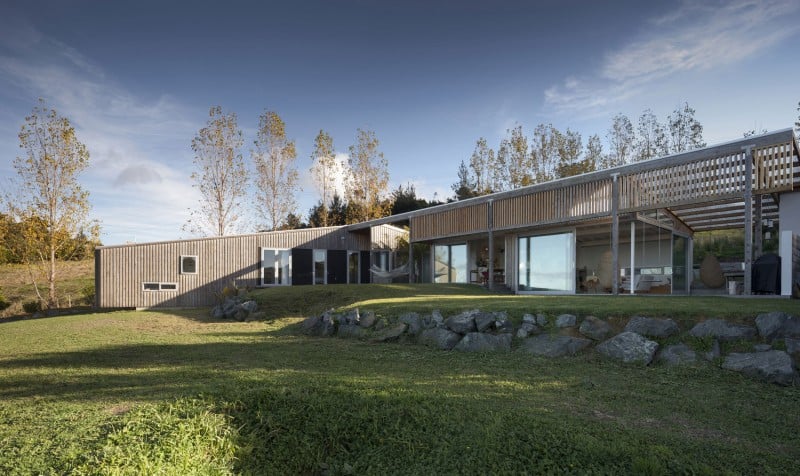
Designed by Glamuzina Paterson Architects and situated on a hillside in the coastal town of Snell’s Beach, New Zealand, this home is characterized by its uncelebratory integration into the environment and its supremely open room design. The house’s extensive glass area on both the interior and exterior affords its owners picture-perfect views of the town below, and sliding glass panels allow them to physically open the home to nature. Every single room of the house has its own glass wall with a method for ingress and egress, allowing each resident of the home to connect themselves with the surrounding environment at will. The nighttime side of the home addresses privacy concerns by obscuring each bedroom with walls on all but one side each, and each remaining side has curtains for evening use.
Both inside and out, wood is the dominant theme in this dwelling’s design. The home’s structural walls are covered with slatted and wide-spaced wood strips, all the floors in the interior rooms are wood, and most of the abode’s furniture features wood finishes. Coupled with the open architecture of the house, this prevalence of wood harmonizes the structure and the natural beauty of the surrounding area. Inside open-format spaces, hanging chairs, benches, and other traditionally outdoor furnishings complete the combination, truly uniting the home to its lot. The house is airy and clear where convenient, but still manages to house a family’s life in quiet solitude where more privacy is required.
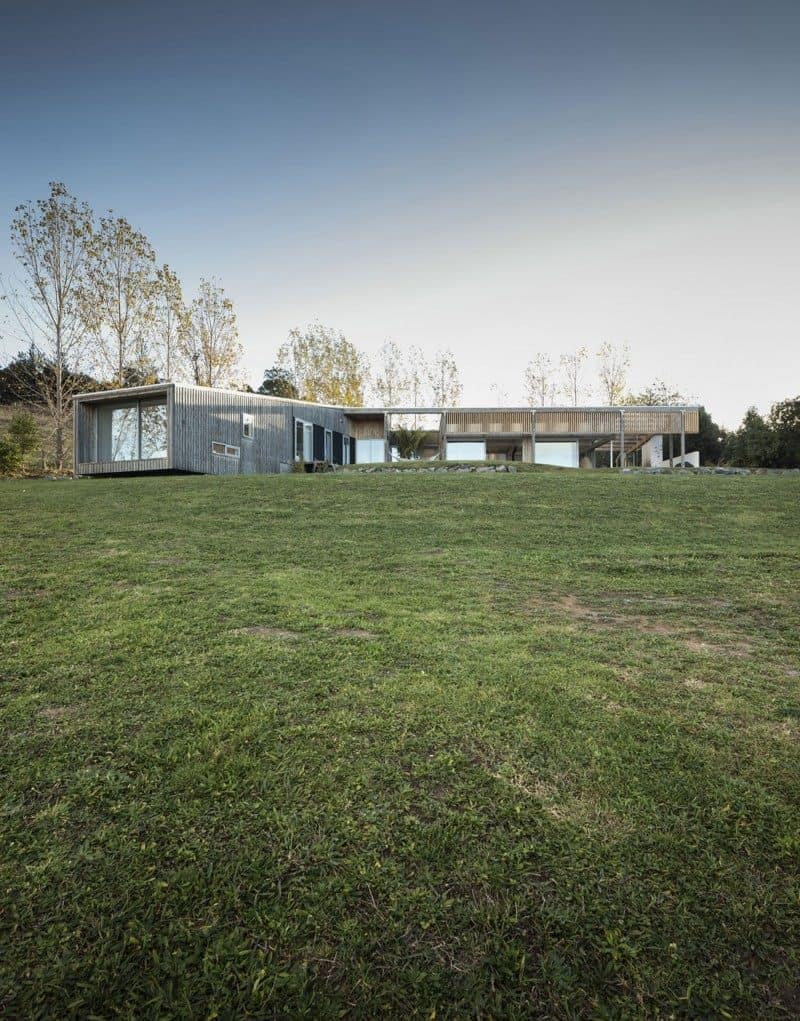
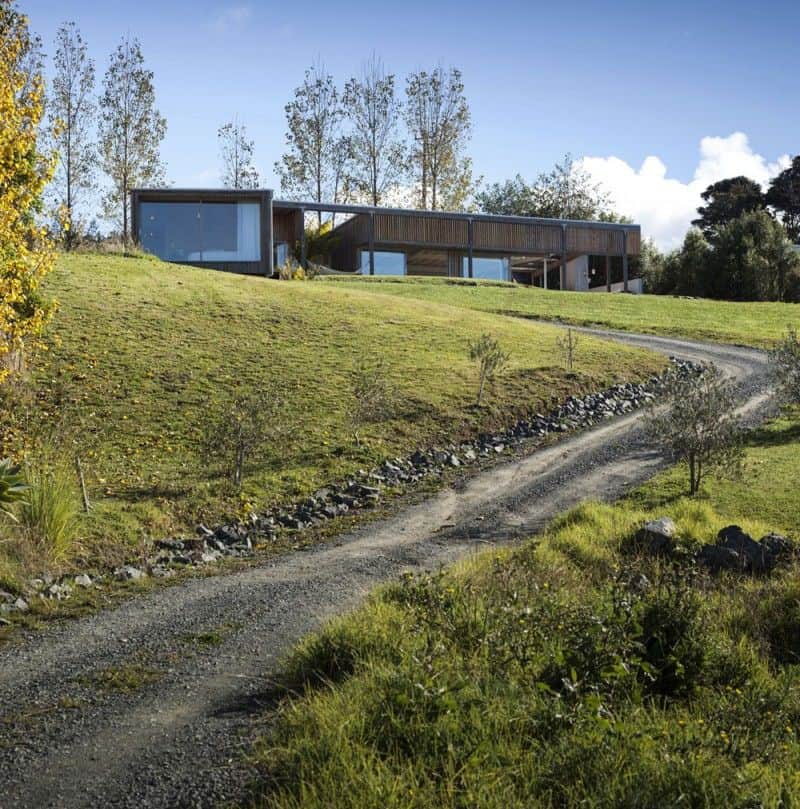
A simple dirt driveway leads up to the home, accenting a back-to-nature mindset that went into the proposal of this home. Like most of the property, it is simple and organic.

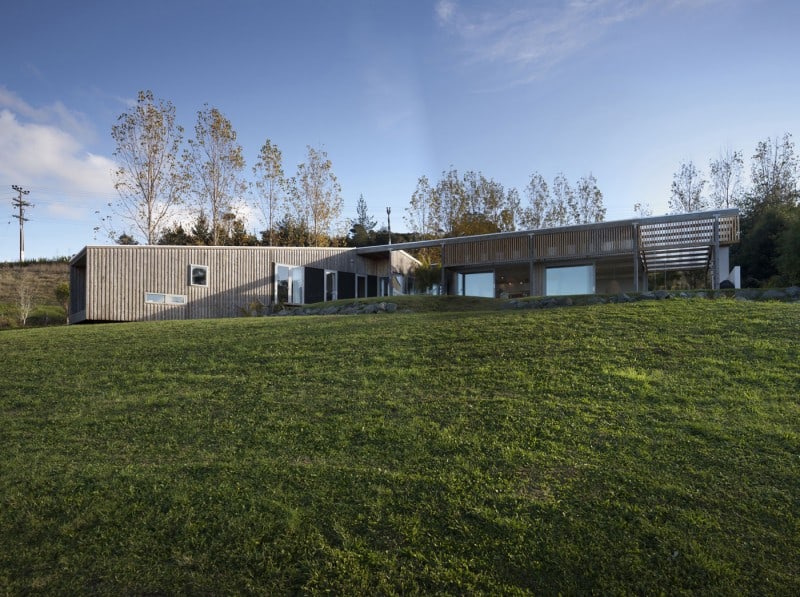
One half of the house is dominated by glass; the other is swathed in wood. Inside, the challenge of merging personal and communal rooms is met by analogous materials, joining two decidedly different architectural themes.
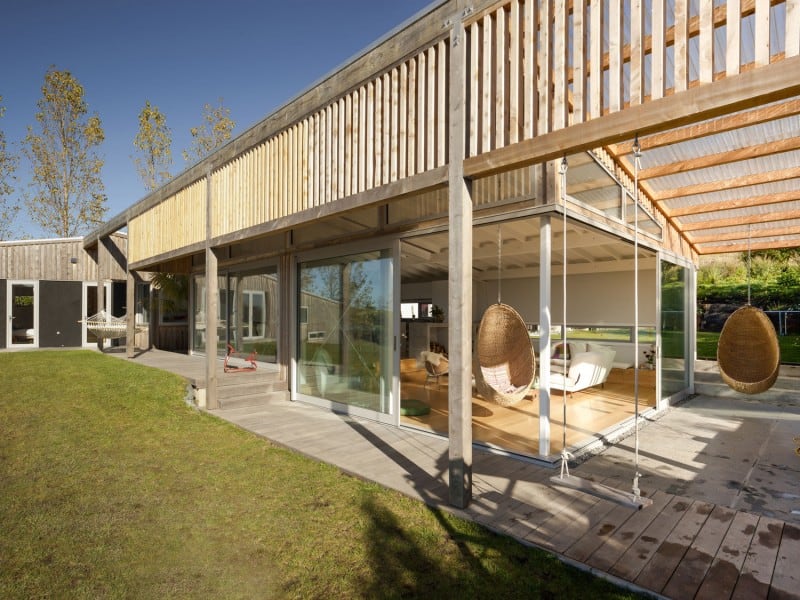
The indoor floorspace of the house is actually smaller than one would imagine from afar. Each interior wall is offset a few feet from the wooden lattice structure and accented in silver, accenting a modern form within traditional materials.
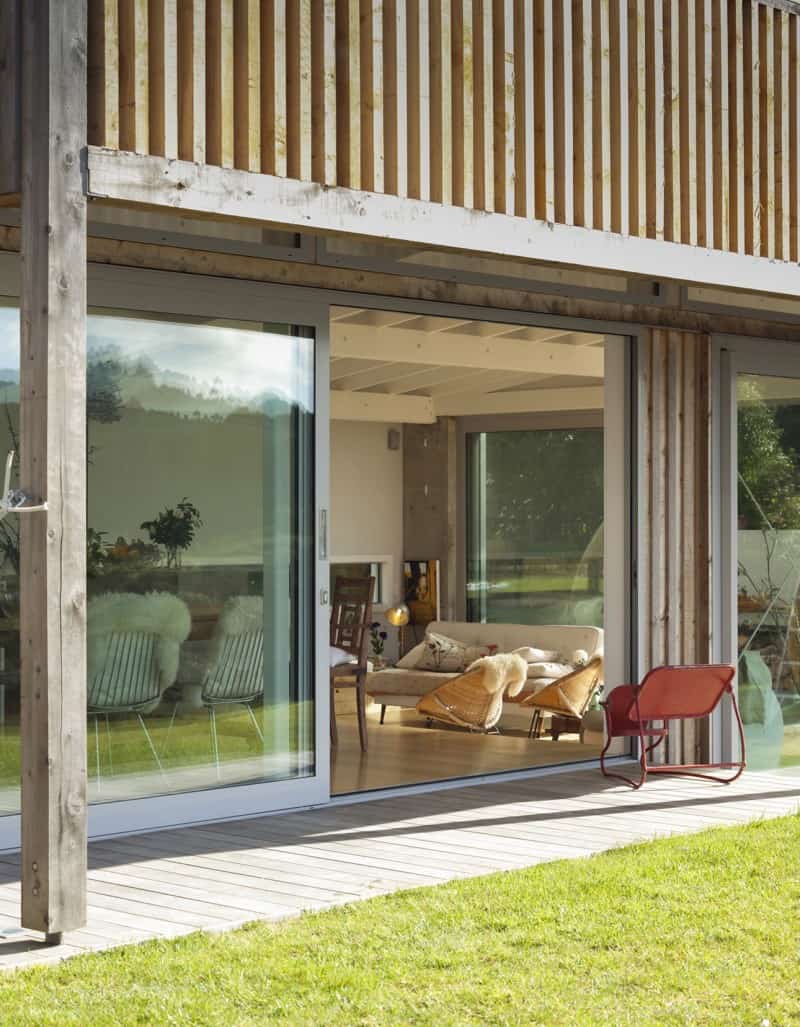
Each room on the public side of the house has at least two exits to the outdoors. This one between the living room and kitchen is among the largest present in the design.
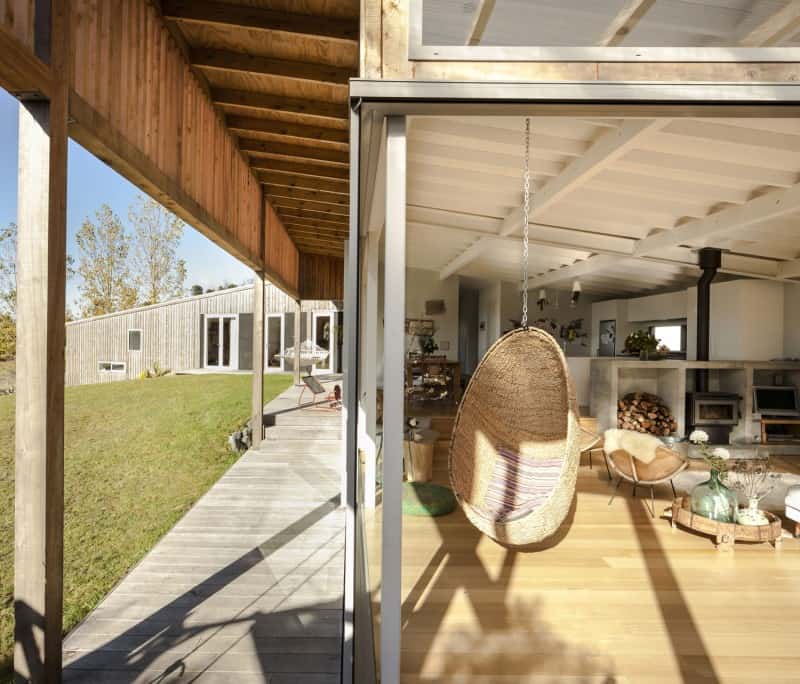
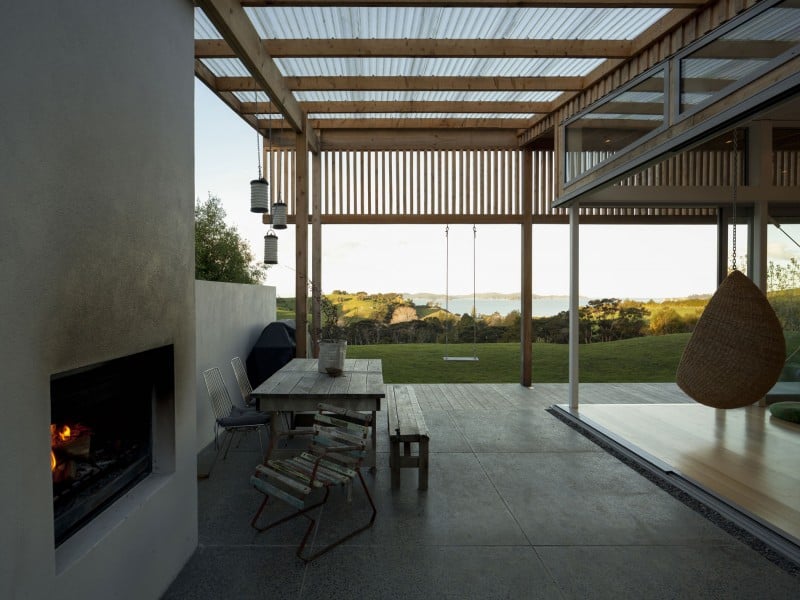
On the edge of the house, an outdoor patio with tile floors is covered by clear plastic paneling, allowing for outdoor lounging regardless of rain.
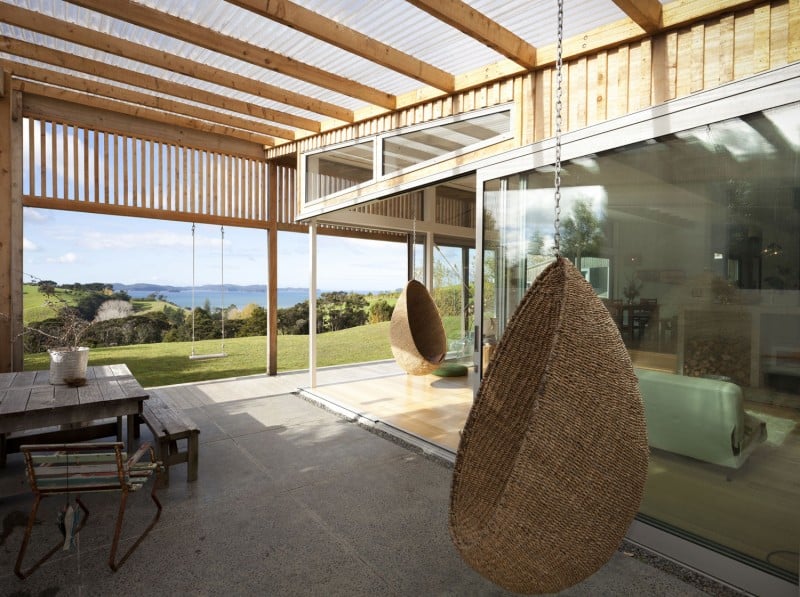
A graceful glass panel separates the covered porch from the inner home. The offset between the roof’s edge and the home’s entrances give occupants a spectacular outside view without blinding them with direct sunlight.
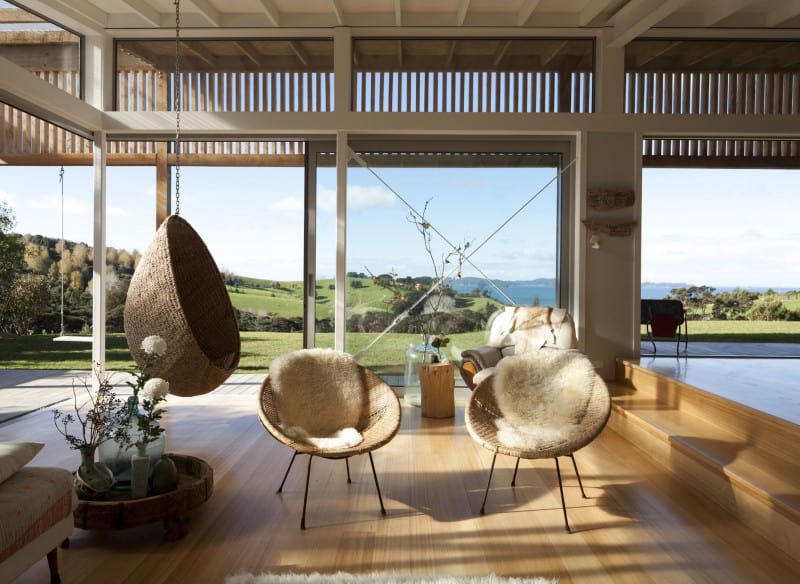
Once you step inside the home itself, the ceiling changes from see-through to a Cape Cod cottage-style white, angled gracefully to energize the style of each room.
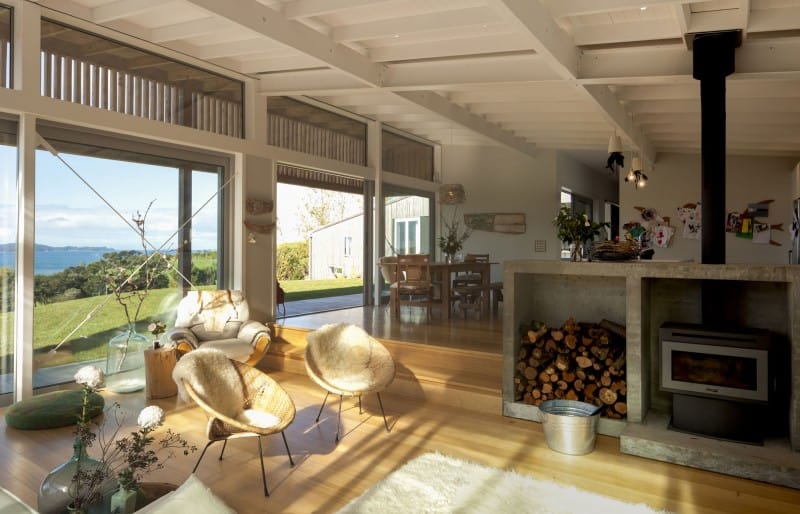
The principal part of this wing is a large room, open from the waist up, containing living, cooking, and eating areas. Decor comes in the form of flowers and branches, furthering the natural air of the abode.
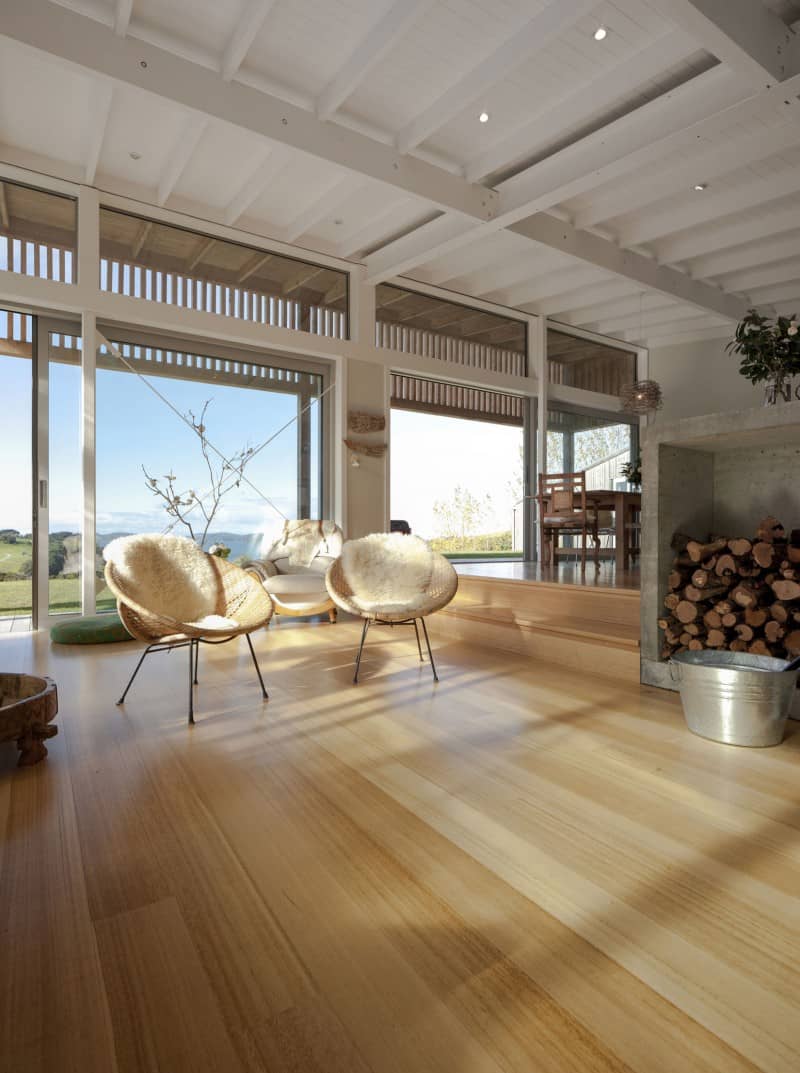
Throughout all the indoor spaces of the home, a universal flooring is used. The light wood helps to unite the design themes public and private rooms, which have very different structures in this design.
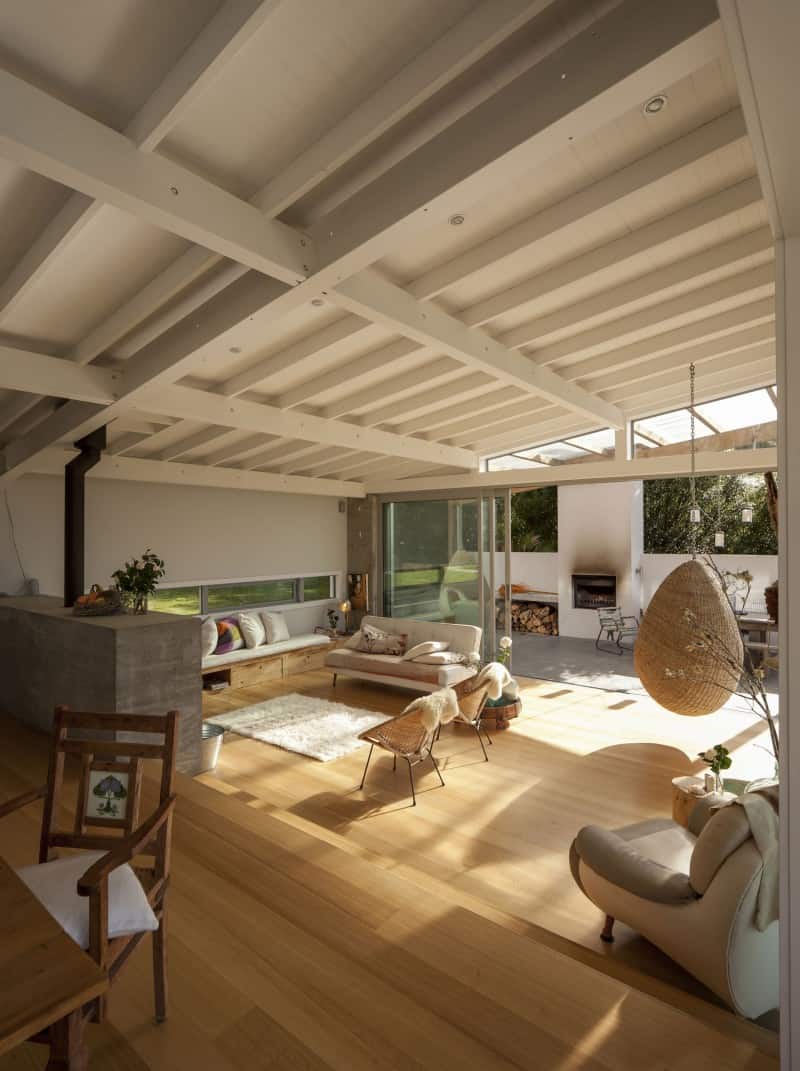
The thick wall formed by the furnace and its wood storage pairs with a step up to define the edges of the living room on this side, leading into the kitchen and dining room.
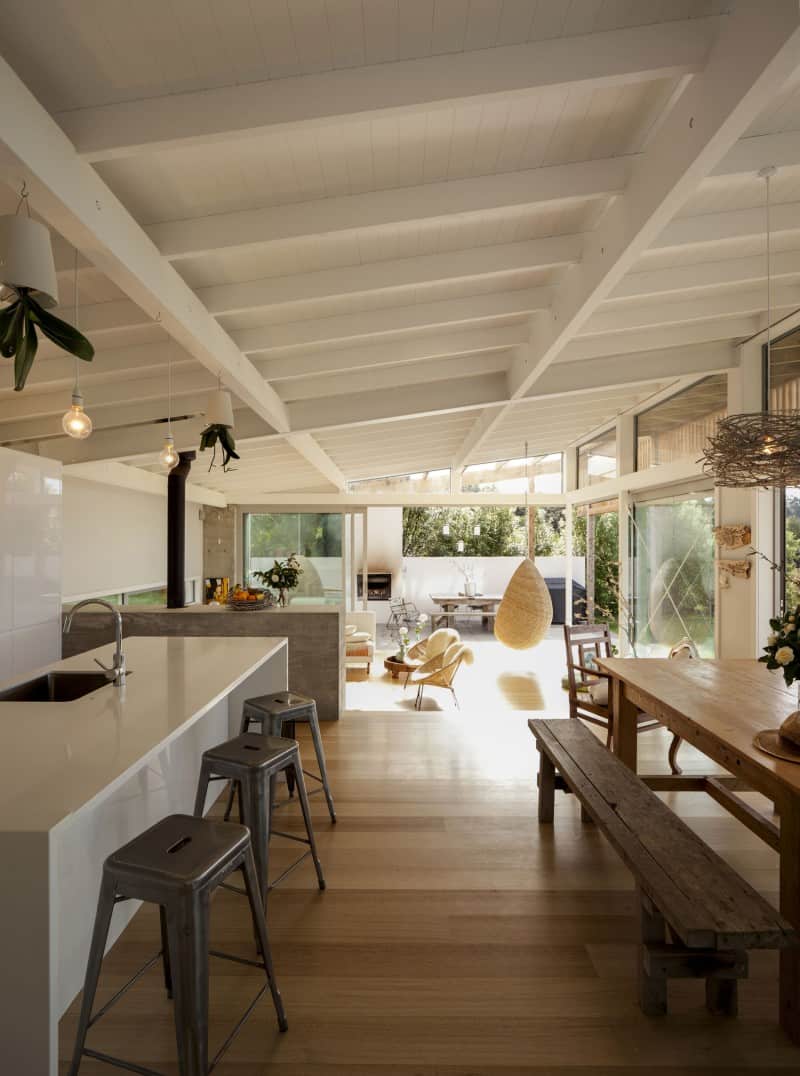
The furniture of the kitchen echoes that of the outdoor patio, with a picnic bench and worn-metal stools. Its structural elements and furniture, on the other hand, are glossy and minimally modern.
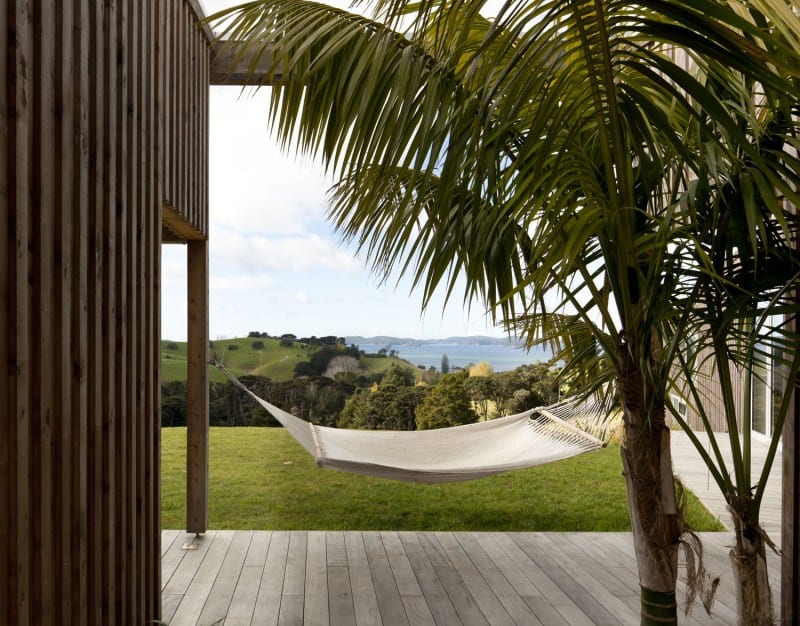
Wedged between the public and private wings of the house, this hammock provides a space to relax and enjoy the staggering view of a bay below. An entire palm tree is sculpted into the same corner to provide shade.
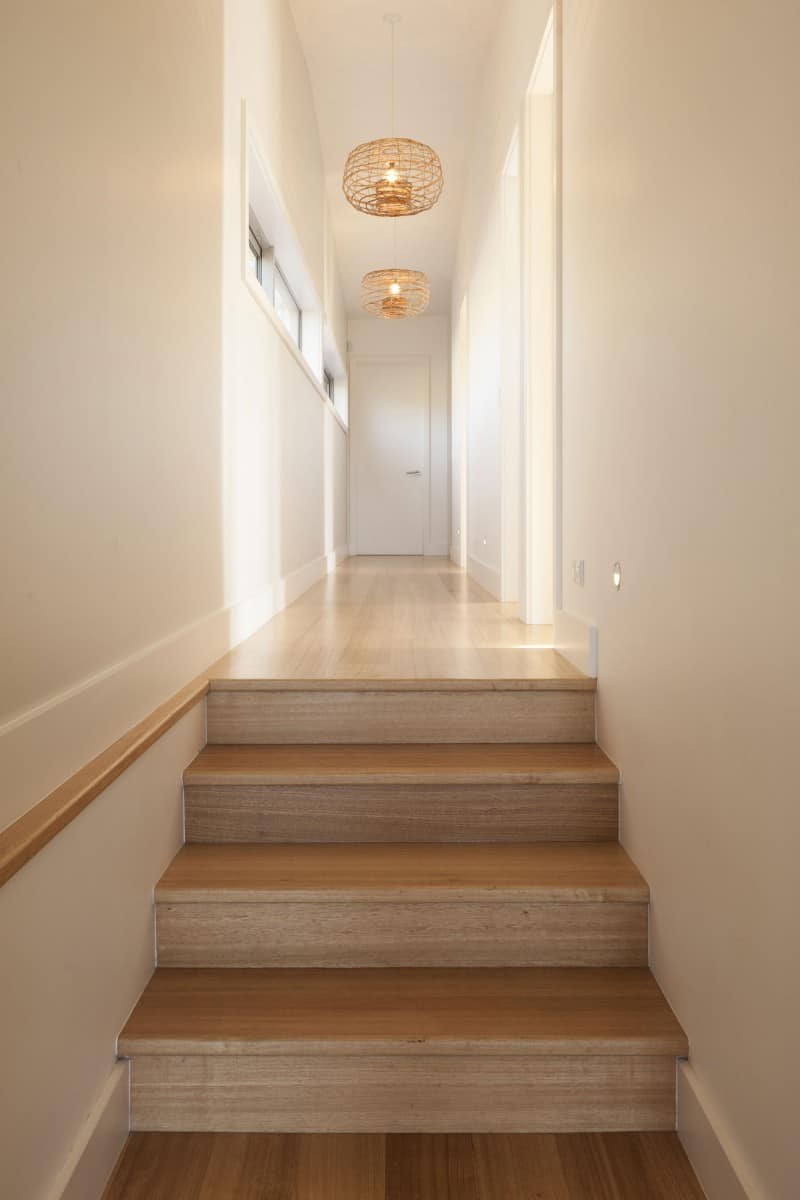
The residential half of the home is much more traditional in form that the rest of the building. Each individual room has its own glass wall connecting it to the outdoors, but the passageway between the rooms is downright conventional.
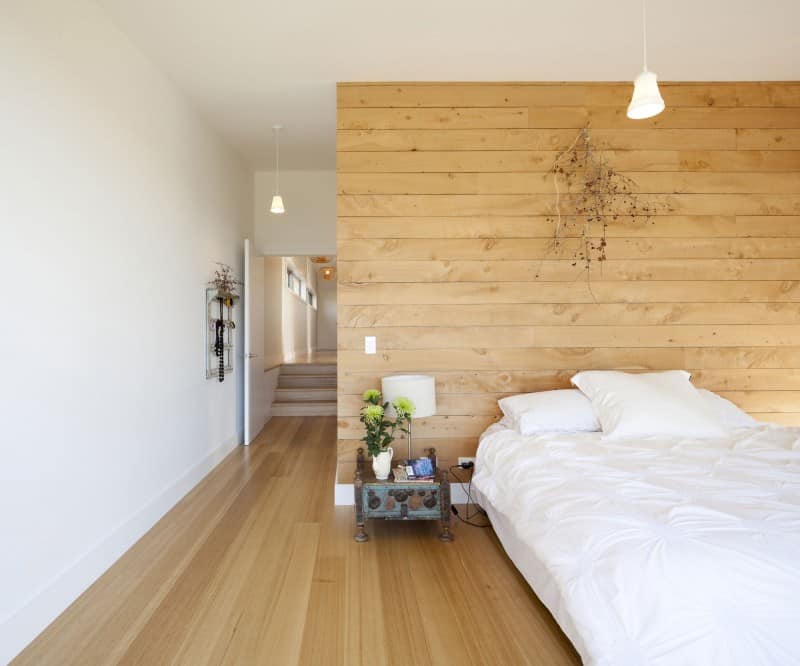
Each bedroom in the house (there are four) is minimal and wood-paneled, accented by natural art pieces and bright walls and furniture.

No excessive and distracting landscaping is used on the lot aside from the grass of the lawn itself, bringing the home closer to the nature around it.
Glamuzina Paterson Architects Ltd
